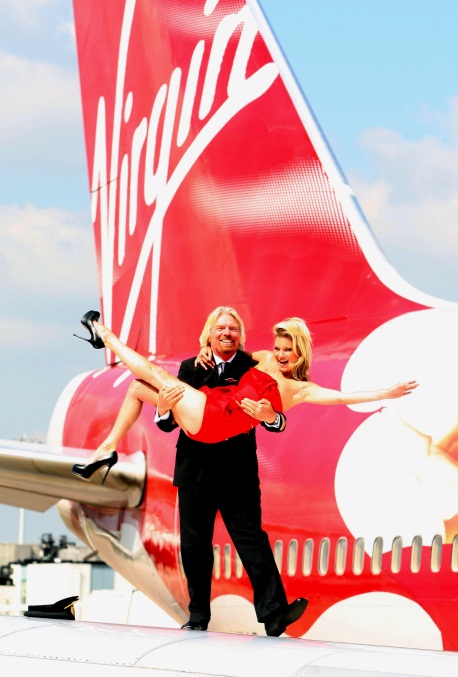Most first time entrepreneurs, when they start a business, start with the idea. Yet, this is an ineffective way of creating a business. Instead, the entrepreneur should start by figuring out an innovative method for acquiring customers. Starting with the method of customer acquisition then better informs your selection of a specific idea – a product or service – that can be delivered and scaled.
Why does the idea usually come first? When you start out as an entrepreneur, often your inspiration comes from a frustration with a problem have you come across. You become passionate about solving the problem. Soon, you develop a solution that you believe better solves the problem than the alternatives. You’d think this would be enough to ensure a blockbuster business. It is not.
Driving customer adoption is hard
How will every single person who could use your product or service learn about it? How much will it cost – in terms of manpower and money – to reach them? What perceptions and beliefs does your prospective customer have about the existing solutions – and the brands behind those solutions – that will prevent them even trying something different? To what extent do they feel their colleagues, friends and family would need to approve of your solution? What would they not be purchasing by purchasing your product or service – what are you substituting in their life? How do they think about evaluating solutions such as yours? What changes of habit, or training, would be required for them to switch to what you offer – and do they believe the emotional investment to be worthwhile for the rewards they might reap?
Driving customer adoption is hard. To create a real business, I believe it is far more important to develop innovative and effective mechanisms to weave through your target customers’ buying process than it is to develop an innovative product or solution. Whether it be the Tivo, Concorde planes or Google Wave, there are numerous examples of sophisticated technologies that never hit the mainstream. In the meanwhile, companies as diverse as Virgin, Microsoft and Groupon hit the mainstream, but through innovative customer acquisition methods, rather than sophisticated technology.
Virgin: PR stunts that built a brand
Virgin’s customer acquisition method is the strength of its brand. Early on, through numerous hot air balloon record breaking stunts, covered widely by the media, Richard Branson established Virgin as a rebellious brand. Virgin has, since then, leveraged and strengthened its brand to enter markets ranging from air travel to mobile phones, positioning itself as the sexy, rebellious newcomer. In each market Virgin has entered, the point of differentiation has largely been the brand – not any sophisticated technology.
Microsoft’s gorilla-sized distribution partner
What catapulted Microsoft was not superior technology. In the 1980s, Microsoft’s key achievement was penning a deal with IBM so that every IBM PC had packaged with it a copy of MS DOS. Thus, Microsoft’s early customer acquisition method was simply getting its product out through a gorilla-sized distribution partner. MS DOS itself was a product Microsoft had purchased from the Seattle Software Company, once Microsoft realized IBM needed an operating system. As the IBM PC became mainstream, the install base of PCs running MS DOS exploded. MS DOS – a technology Microsoft had not even invented – gave Microsoft a large install base of users to which upgrades (i.e. Windows 95, the MS DOS successor) and extensions (i.e. applications, such as the Office suite) could be sold.
Groupon: customer acquisition through group action
Before there was Groupon, there was The Point. Its founder, Andrew Mason, had not developed a technology, but a mechanism for collective group action, for example, to fix a local playground’s swing. In order for a cause to because reality, a “tipping point” number of people had to make a pledge to the specific cause. It soon became clear that collective action to get a deal at the local restaurant had more general appeal than fixing the local playground’s swing. To ensure the deal “tipped” and became a reality, those who bought the deal would share it with their friends. As Groupon grew, this viral customer acquisition method became less necessary, as PR and brand recognition rocketed the company.
Start with customer acquisition
Virgin knows it’s rebellious brand gains customer attention in saturated, stale markets, so the new ideas and markets Virgin pursues are narrowed down by its customer acquisition method – its brand. Microsoft knew partnering with IBM would get Microsoft in front of customers. Microsoft acquired the technology, MS DOS, after the customer acquisition method was in place. Groupon is almost entirely a customer acquisition method – a method that was ineffective when applied to the idea of social causes, but highly effective for the idea of sending business to small, locals merchants.
Developing a solution to a nagging problem is an ineffective way of creating a business, because it ignores the complexities of getting the solution into the hands of customers, and getting them paying for it. It may sound counter-intuitive, but the real way businesses are built is by first figuring out a way to acquire customers. Only then do you figure out what to sell to those customers.
Dinesh Ganesarajah is Managing Director at PreScouter, an open innovation and technology scouting company. You can find Dinesh on Google+.
Image Credit: http://www.londonlovesbusiness.com





